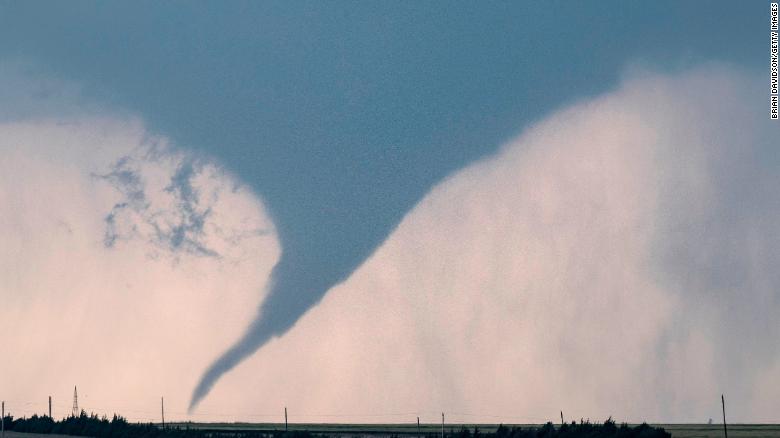CNN reporter reports on the ground about Laura 1:31
(CNN) - In addition to catastrophic storm surge, damaging winds and heavy rains, Hurricane Laura will likely also produce several tornadoes and waterspouts.
"Hurricanes and tropical storms that make landfall in the Gulf of Mexico are more likely to produce tornadoes compared to storms in the Atlantic," explained Brandon Miller, a CNN meteorologist.
However, not all coastal areas in the Gulf of Mexico are equally threatened.
Hurricane Laura makes landfall with winds of 240 km / h 1:30Note that this is less true when making landfall in the Gulf in Texas, as the coastline slopes more from south to north like the east coast of the Atlantic, rather than east to west like the north coast of the Gulf of Mexico ”, clarified Miller.
In other words, a tropical system that makes landfall in Louisiana, like Laura, could produce a few more tornadoes than one would in, say, Galveston, Texas.
For example, Hurricane Katrina, when it first made landfall in Florida on August 25, 2005, there was only one report of a tornado: in the Florida Keys. But several days later, when Katrina made landfall for the second time, this time in Louisiana, on August 29, 2005, there were 20 reports of tornadoes. This was due, at least in part, to the angle of the storm when it made landfall.
In all, 33 Katrina tornadoes were reported. Interestingly, most of those tornadoes occurred in Georgia, some of them occurred north of Atlanta.
"After the events of Hurricane Katrina, the National Weather Service conducted several tornado studies throughout the state of Georgia and was able to verify that at least 18 tornadoes appeared in the state from the outer bands of Katrina," said Kyle Thiem, meteorologist at the National Weather Service, Atlanta office. "At that time, 18 tornadoes set a record for the largest number of tornadoes ever reported in the state of Georgia on a single day in the month of August."
This is important to keep in mind because the tornado threat is not limited to shore or the day of landfall. Often the day after landfall can produce more tornadoes than the day of landfall, and can occur hundreds of kilometers inland.
"There may be more dry air in the upper levels, which can actually increase the tornado threat by increasing instability," Miller explained.
For example, during Hurricane Rita, there were 39 reports of tornadoes when the storm made landfall on September 24, 2005 in Louisiana. But the next day, there were 47 reports of tornadoes. Rita sparked approximately 90 tornadoes in the southern United States.
With Laura, the "Slight Hazard" level 2 issued by the Storm Prediction Center covers a much larger area on Thursday than the day before. On Wednesday, there is a risk of tornadoes only in Louisiana. On Thursday, tornado risk expands to Mississippi and Arkansas.
Tornadoes can occur more often near the center of hurricanes than we think, according to Miller, but the winds are so strong and the destruction is so great around the center that storm survey teams cannot determine what damage may be. from a brief tornado in the face of damage from extremely strong and persistent winds within the center wall of a hurricane.
Hurricane Laura

